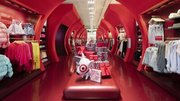Blog
How retailers can get a jump start for busy retail seasons in 2020
Rethink Productivity Founder and CEO Simon Hedaux explains why its time to start planning for 2020 and the busy retail seasons ahead.

January 3, 2020
By Simon Hedaux, founder and CEO, Rethink Productivity
The January sales just starting, but forward-thinking retailers should be looking ahead and plan for 2020's busy retail seasons. The more prepared you are, the smoother and more profitable these times will be. Now is a great time to review your operation and identify the things you could do better in 2020.
It's a serious business, as for many retailers their peak performance periods informs their whole year profits. It's a serious business for customers too. The customer experience you deliver, when customers are keen to get their hands on that important item, will shape how they feel about your brand next time they shop. Peak retail times, such as Black Friday, are times when shoppers go to retailers they may not usually visit and offers an opportunity for you to create a new loyal customer. It's a chance to be a hero or zero.
There is much to consider when preparing for a peak trading day and businesses often develop tunnel vision on the operational aspects without fully considering how customers experience their store on the day. And, what is the thing that annoys customers most?
Queues — especially ones that are badly organized, chaotic, and slow moving.
So what can you do to improve your queue times during busy retail periods?
Plan your stock replenishment during the day well
This is important because you could create a double queue if the customer first has to wait for stock from the stock room and then has to wait again to pay for it.
Make sure the stock is in the stores in good time. Your stores also need to have the space to organise and store it before hand, so it can be easily retrieved it when it's needed. Finding a box in the corner of the warehouse after Black Friday is a sign you missed opportunities.
It sounds simple and obvious, yet stock availability is cited in CEO reports of multiple retailers who've failed to hit their expected sales and created a trail of disappointed customers.
Review opening hours
During sales and other busy days, open your store well before the big rush. The best way to avoid queues is to ensure a steady and regular flow of customers. That's not going to happen on Black Friday and January sales, but if you can at least get some customers served early, it will help reduce the peak time queues. It's also a good way to drive extra sales.
Plan your team for the day
Sort out the rotas, move days off, bring in enough extra cover so customers can get their hands on your deals without standing in a long queue. Or worse still, walking out because the saving just isn't worth the wait.
Think hard about when your busiest times will be and make sure you plan shifts and breaks accordingly. Busy retail days are not the days to trim team hours and try and save a little money — speculate to accumulate.
If a queue starts to build, tackle it quickly
Leaving till stations closed, having staff focused on other tasks rather than helping customers will create a serious dent in your customer experience.
Open extra tills, deploy mobile payment technology and ensure your customers see you reacting. Customer experience data shows that customers are generally understanding when stores are busy, provided they see the store is doing everything they can to serve them more quickly.
Leadership
Busy trading days always throw up unexpected challenges, whatever your support office has done to set up stores for success. Your local leadership teams are essential to deliver a good customer experience at store level.
The golden rule for peak trading is to keep your managers out of hands-on work. Their job that day is to be the general, surveying all and marshaling their resources to make the most of the day.
Have you communicated with your local leaders in a way that sets them up for success? Share the operational details and go further so they are ready for the important role you need them to play on the big day. You've still got time to get messages and calls set up with your managers, help them manage the details of their operation and deliver the best customer experience they can.
Once the day/period is done, review everything
Ask area and store managers for their feedback on how you could have set them up better and identify the highs and lows of their local execution.
Use your customer experience program feedback to understand how customers felt.
Learn what worked well so you can do it again next year and identify the changes to create more profit next year. Use your lessons wisely.





